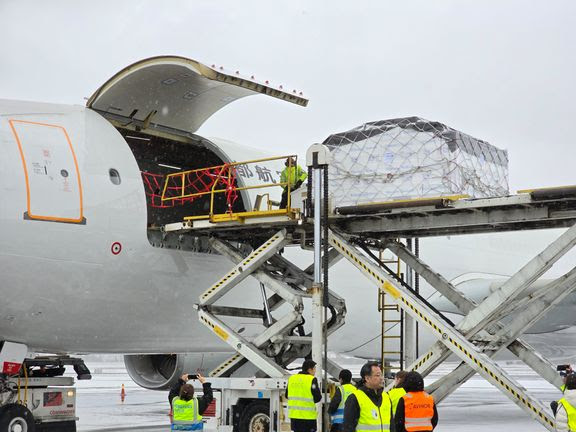Losing out as major producers sell directly to end customers.
“It has been another bad week. We paid NOK 75/77/80 ($6.90/$7.08/$7.36 / €6.38/€6.55/€6.80) for 3-6 kg on Friday. That was the price the market was willing to pay. Then we sold at a loss of NOK 2 ($0.18/€0.17) on Monday. It will probably be the same next week. Customers have given us a price they are willing to pay. If they don’t get that price, they won’t buy,” an exporter told SalmonBusiness, sounding slightly exasperated.
For the export company, the situation is similar to that of a bakery—whether or not they have bread to sell. To stay in business, they must purchase goods.
“There is enough fish. Customers say the market abroad is hesitant. There is no strong demand. If they don’t get their price, they won’t buy the fish. Then they wait until Monday. They know they will get their fish then. This has been the case all year.”
Cold Storage
“And then they want to offload the stocks they already have. When you reduce inventory, you take in less fish. Even at these prices, there is no great demand,” he said.
This results in small price movements.
“Really, there is a downward trend. Prices have to go down. We know what we have to buy at,” he said, listing the following prices:
- 2-3 kg: NOK 69-70 ($6.35-$6.44 / €5.87-€5.95)
- 3-4 kg: NOK 76 ($6.99 / €6.46)
- 4-5 kg: NOK 77-78 ($7.08-$7.16 / €6.55-€6.63)
- 5-6 kg: NOK 80 ($7.36 / €6.80)
- 6+ kg: NOK 82 ($7.54 / €6.97)
“Customers set the price. They have given us a price. That’s the price we need to break even. There are no signs of a price increase in the coming weeks. Maybe during Easter week.”
Challenging Market
Several exporters confirm falling prices and say they are finding it challenging that large-scale salmon farmers sell directly to processing companies on the continent at prices they themselves cannot compete with.
“Prices are slightly down. We paid NOK 78 ($7.18 / €6.63) for 3-4 kg last Friday, so that’s a NOK 2 ($0.18 / €0.17) drop, and NOK 3 ($0.27 / €0.26) down on 4-5 kg,” one exporter said.
“We are seeing a decline,” another exporter added. “I estimate NOK 77-78 ($7.08-$7.16 / €6.55-€6.63) for 3-4 kg, NOK 79-80 ($7.27-$7.36 / €6.72-€6.80) for 4-5 kg, and NOK 81-82 ($7.45-$7.54 / €6.89-€6.97) for 5-6 kg. These are not major changes, even though there is a good supply of fish.”
“We bought at NOK 69 ($6.35 / €5.87) for 2-3 kg, NOK 75 ($6.90 / €6.38) for 3-4 kg, NOK 77 ($7.08 / €6.55) for 4-5 kg, NOK 81 ($7.45 / €6.89) for 5-6 kg, and NOK 85 ($7.82 / €7.23) for 6+ kg,” said a trader. “And the most off-price of these is the 6+ kg. There is a lot of it,” he added, noting that some of the large-scale farmers “have a lot of big salmon that they are pushing to Asia.”
Higher Prices with Direct Export
A salmon farmer also confirmed higher sales prices—and that Norwegian exporters are offering lower prices than what they can achieve by selling directly to international customers.
“We sold at NOK 84-86 ($7.73-$7.91 / €7.14-€7.31) for 3-4 and 4-5 kg—and NOK 87 ($7.99 / €7.39) for 5-6 kg to a customer in the UK. The Poles are talking about NOK 82 ($7.54 / €6.97), and that means we are getting NOK 83 ($7.63 / €7.06) for 3-4 kg, NOK 84 ($7.73 / €7.14) for 4-5 kg, NOK 87 ($7.99 / €7.39) for 5-6 kg, and NOK 90 ($8.27 / €7.65) for 6-7 kg in Europe. But we are waiting to finalize agreements with Asia. There, we will probably get over NOK 100 ($9.18 / €8.50) for 6+ kg,” he estimated.
SalmonBusiness gathers spot prices for salmon every Friday after lunch, tracking fish to be delivered the following week. This process involves contacting multiple entities in the value chain, including farmers, exporters, and importers. At least five independent sources are consulted, though they may not always be publicly disclosed.

